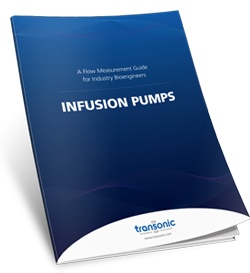What Bioengineers Should Know About Flow Measurement for Infusion Pumps
Infusion pumps can administer liquids in ways that would be impractically expensive or unreliable if performed manually by the nursing staff.
For example, they can administer as little as 0.1 mL per hour injections (too small for a drip), injections every minute, injections with repeated boluses requested by the patient, up to maximum number per hour (e.g. in patient-controlled analgesia), or liquids whose volumes vary by the time of day. 
Because they can also produce high but controlled pressures, they can inject controlled amounts of liquids subcutaneously (beneath the skin) or epidurally.
However, infusion pumps have been a source of numerous patient safety concerns due to errors with liquid/medication delivery to high-risk patients. This can have significant impacts on cost and clinical outcomes. Even with the adoption of smart infusion pumps, IV medication errors continue to occur at alarming rates (up to 60% as reported in some studies).
The U.S. Food and Drug Administration (FDA) reported that over 56,000 medical device errors related to infusion pumps were reported between January 2005 and December 2009. The World Health Organization (WHO) has called for 50% fewer errors by 2022.
Transonic’s “True Flow” transit-time flow measurement technology offers an easy-to-use monitoring system to identify common infusion pump failure modes such as air in the line, occlusion, free flow, reverse flow, leakage, etc. This would lead to a significant reduction in the corresponding health risks; reduce hospital stays and costs; reduce clinical man-hours; and improve outcomes. It would also allow pump manufacturers and the FDA to easily evaluate new infusion pumps and perform post-market surveillance.
Learn more about how transit-time flow measurement technology can be used for infusion pumps in this guide.



